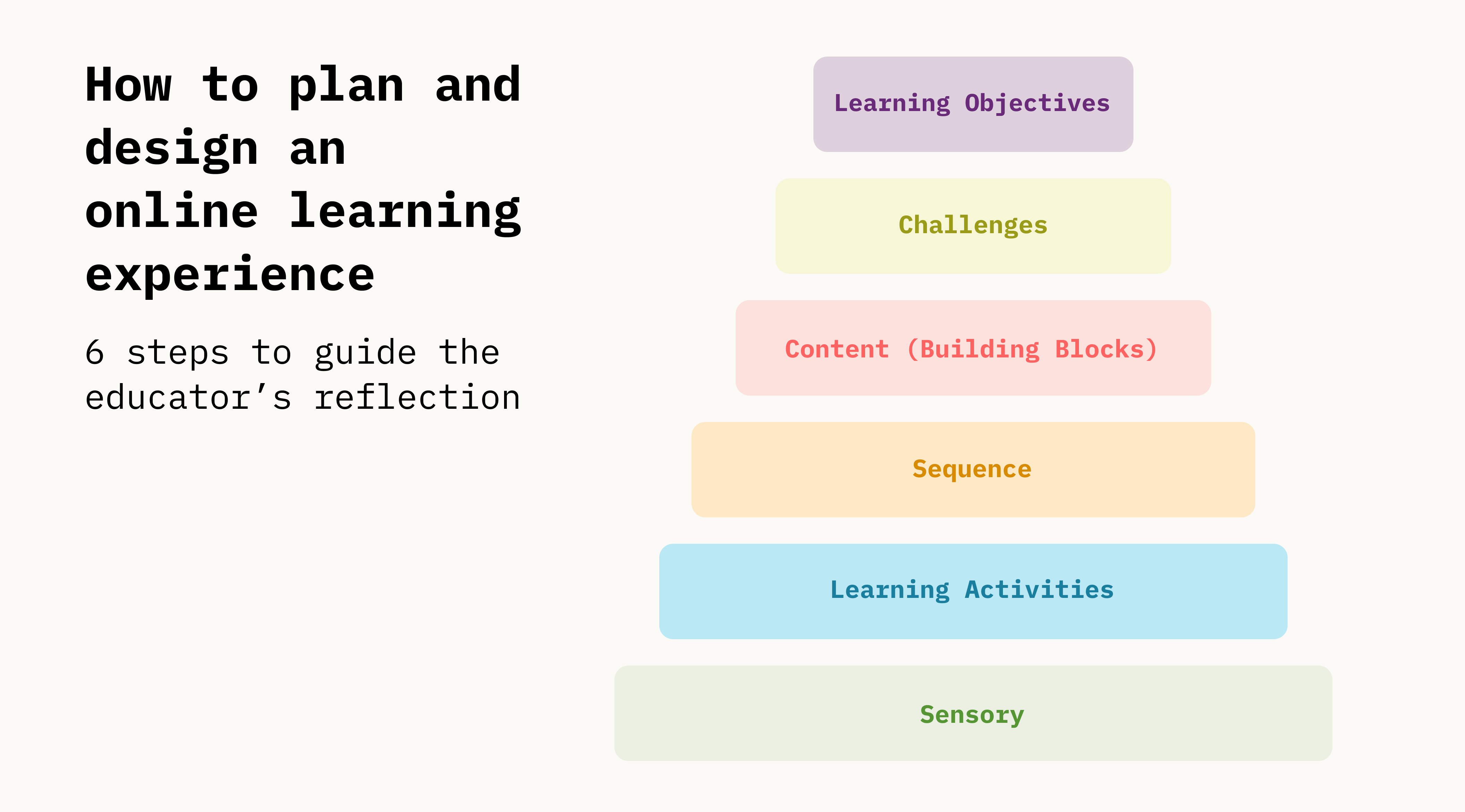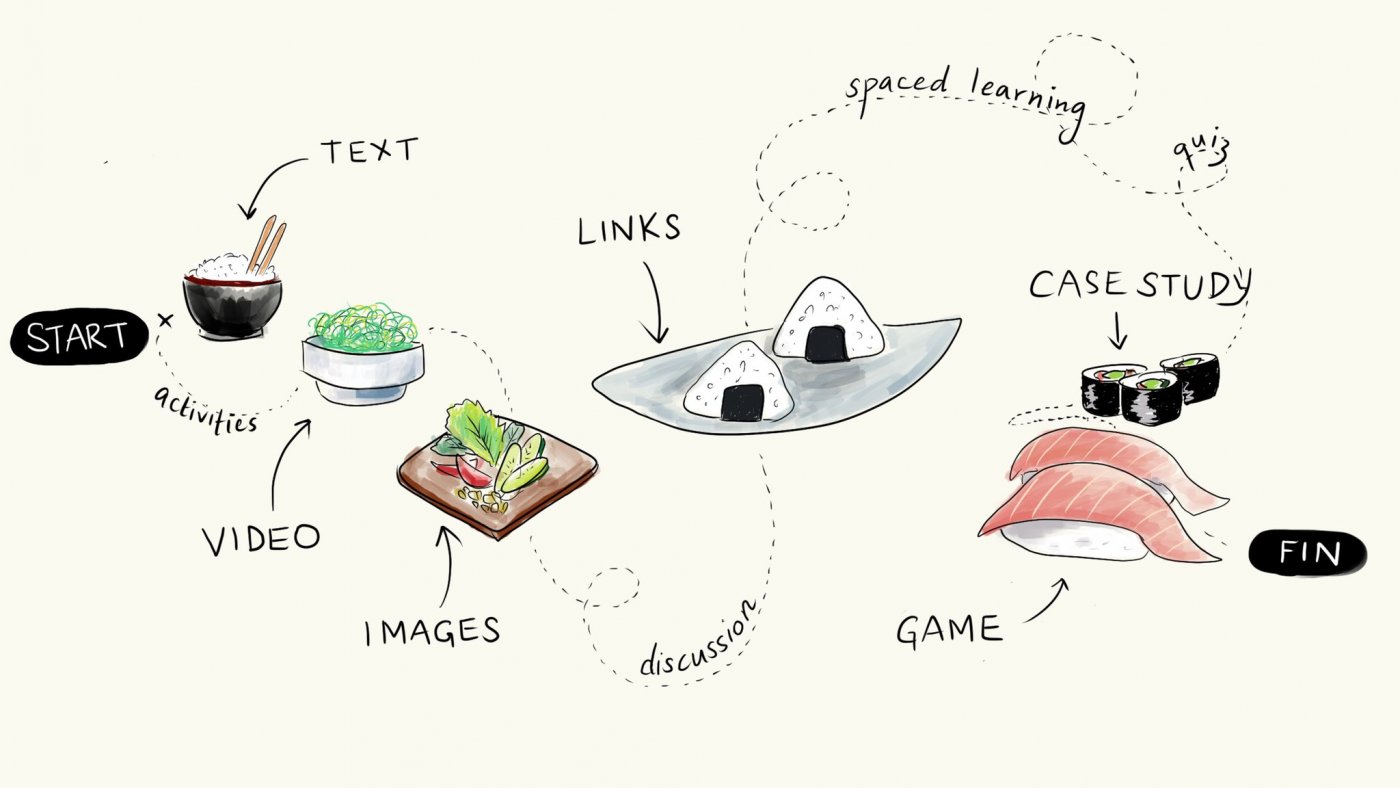Guide to Planning and Designing an Online Learning Experience
- Read more about Guide to Planning and Designing an Online Learning Experience
- Log in or register to post comments
- 235 views
1. Learning objectives
Start with defining your "why".
- What are your learning objectives?
- What learning experience are you trying to solve?
- What do you want to teach people?
2. Challenges
Next, identify the challenges your learners currently face in order to reach the learning objective(s) you just defined.
- What is keeping them from being able to learn what you're hoping to teach them?
- What are some learning gaps?
- What are some non-learning gaps?
3. Content (Building Blocks)
Now it's time to start thinking about content.
It's easier to brainstorm all the content in terms of building blocks:
- What are the "steps" that will form the journey to get the learner from Point A to Point B?
- What does the learning experience need to consist of, in order to fulfill the learning objective?
4. Sequence
Like a puzzle, the content building blocks of the learning experience should "fit" together well.
- Will you incorporate spaced learning?
- Do you have a progressive case study approach?
- What's the starting point and what's the end-point for what you will teach?
Now try structuring and organizing the content you've planned. Organize the blocks in a sequence that fits the asynchronous and/or synchronous nature of your lesson/course/module.
5. Learning Activities
Especially in an online setting, the sequenced content you've planned should be matched with appropriate learning activities.
Think about all the different ways your learners can absorb the information.
- How will they interact with the different concepts and skills?
- How will they apply and practice new knowledge?
Examples of interaction formats for learning activities may include: audio, video, text, discussions, quizzes, critique sessions, lectures, projects, demos, etc.
6. Sensory
Great! Now that you've thought about: learning objectives, possible challenges faced by learners, content, sequencing/rhythm, and learning activities...
It's time to take a step back and reflect on the sensory aspect of the learning experience. Sure, it's an online learning experience — but that doesn't mean it can't include offline, asynchronous formats or other ideas to take learning beyond the screen.
What are some words to describe how you want the learning experience to look and feel like for your learners?
Reflections from start to finish
A Japanese, slow-food "kaiseki" approach to designing educational experiences:
From start to finish, our goal is to craft a meaningful sequence of learning events that will give our students the taste, texture, appearance & colors of new and relevant knowledge.

Login or register to share your adaptations.
List of adaptions
Be the first to add your adaptation here!
Login or register to engage in the review and feedback process.
Reviews and Feedback
Be the first to review!


Comments
Be the first to comment!